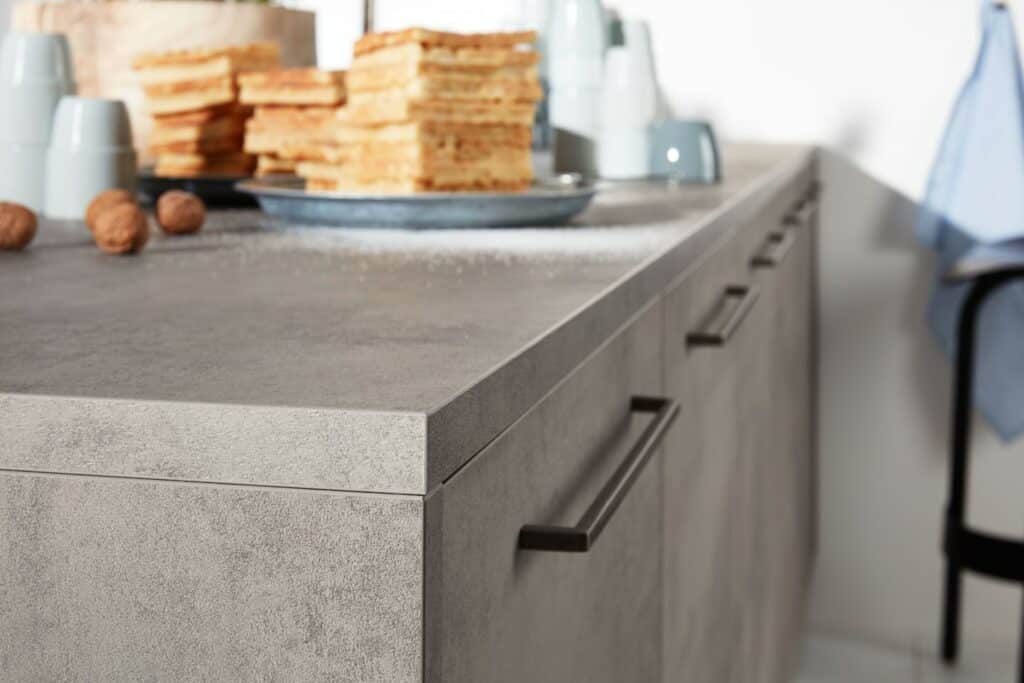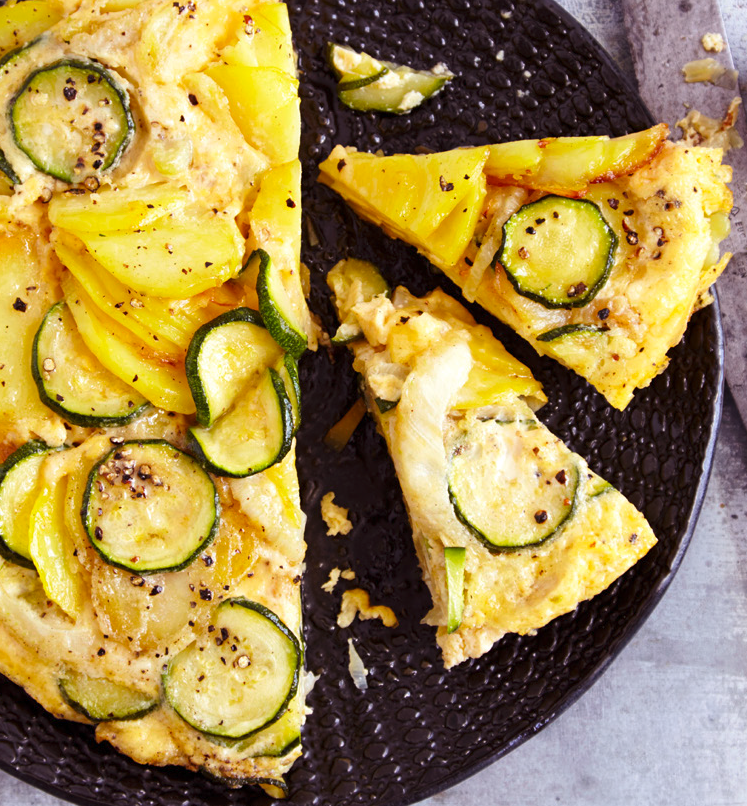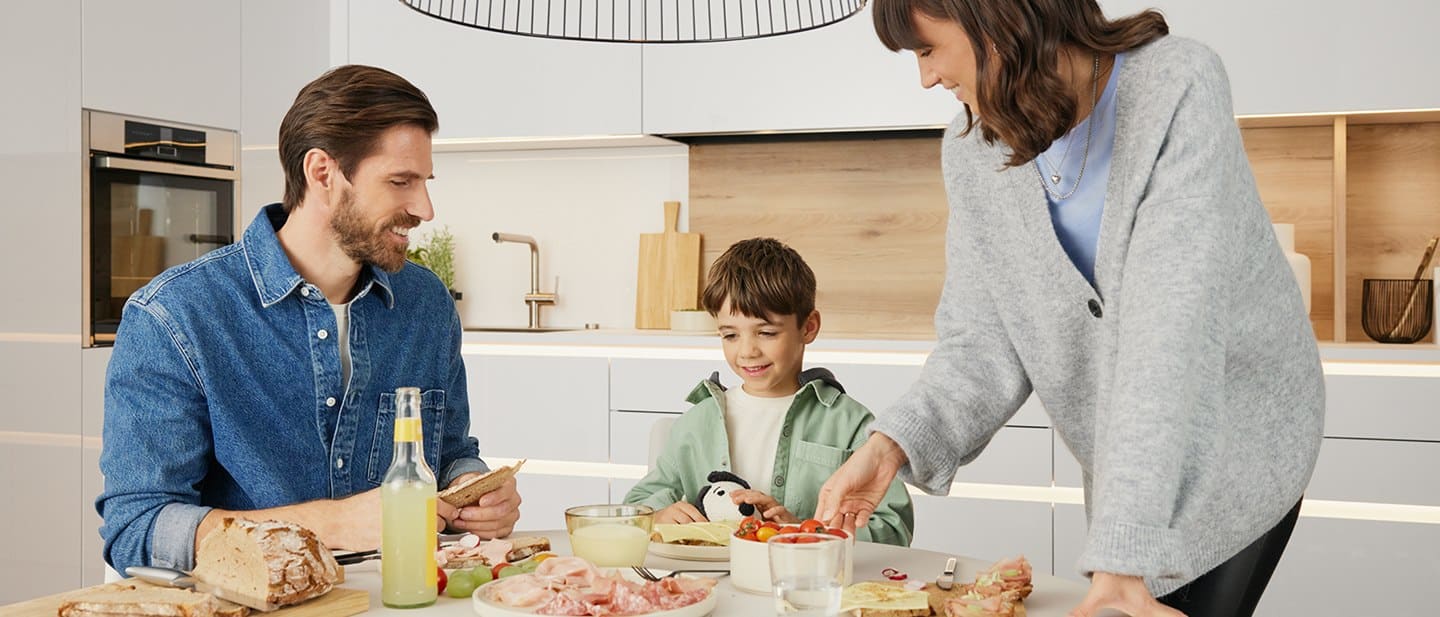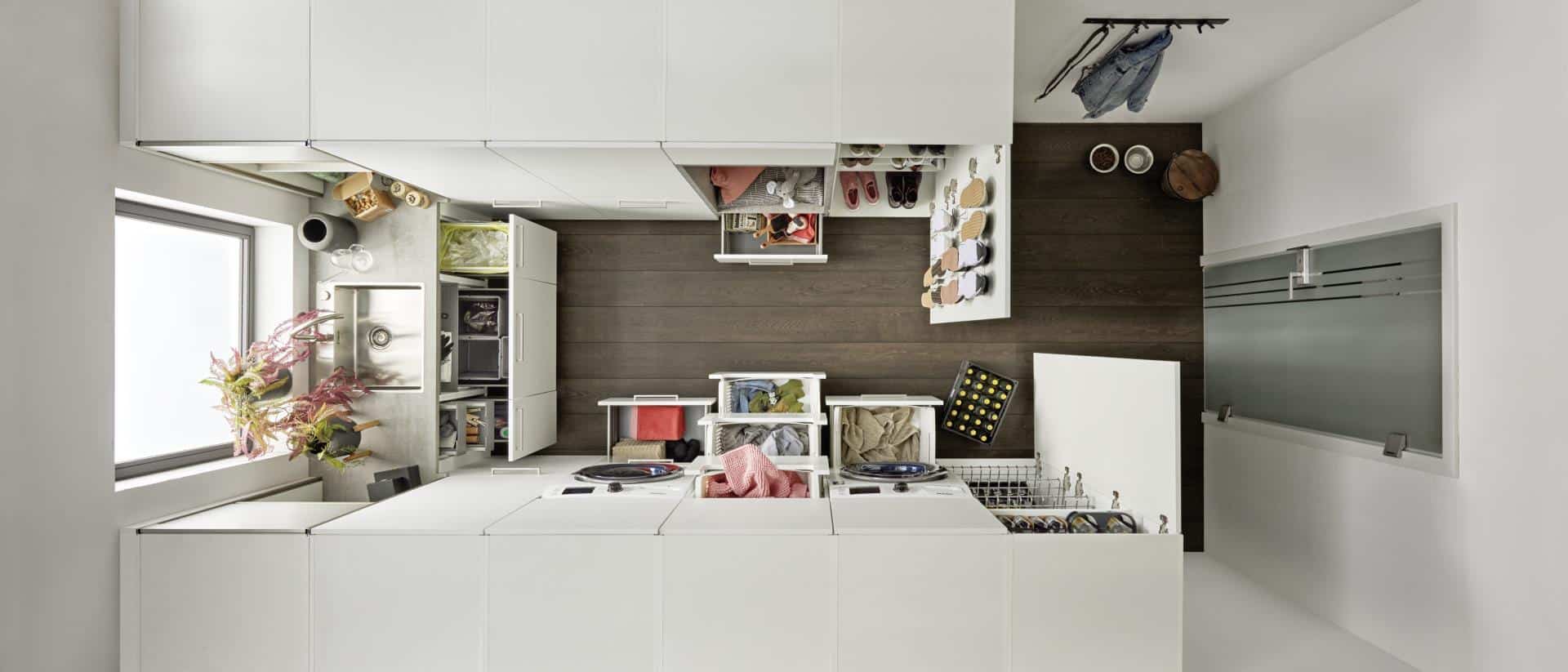TIPS AND TRICKS FOR ANY SURFACE
Steam, frying oil, foods that cause stains – a kitchen has a lot to cope with. Cooking vapours and dust form a particularly tight connection. That is why our furniture is protected by high-quality, easy- care surfaces that are easy to clean. But beware! Aggressive liquid detergents, scouring agents, polishes, wax, solvents, vinegar-based cleaners and steam cleaners are a no-no, just like acidic and silicone-based cleaning agents. Nitro-cellulose combination thinners or synthetic resin thinners can also cause damage and will void your warranty. Keep reading to find out how to care for your worktops and fronts.
The rule of thumb is: Keep it simple. If you use any cleaning agent at all, simply grab a mild liquid cleaner and a completely clean, soft, preferably new cloth or sponge. Why new? Because dust and other fine grains left over from earlier cleaning can act like sandpaper and are a risk to any surface, no matter how well-sealed it is. Make your cleaning tool damp but not wet. Moisture may enter bar handles or edges, causing the wood to swell.
By the way, this simple cleaning method applies just as much to the interior of cabinets as it does to handles. But as always: The exception proves the rule, so let’s look at each surface and its special features in detail.
LAMINATE FRONTS
Cleaning can be so easy: Warm water with afew drops of dishwashing detergent is enough to clean laminate surfaces. Use amicrofibre cloth to do so. One look at the packaging will tell you whether yourcloth is suitable for the purpose. Ensure that your cloth is nice and dampbefore wiping the fronts with it. For persistent dirt and stains you can usecommercial ethyl alcohol. But test it on an inconspicuous spot first.
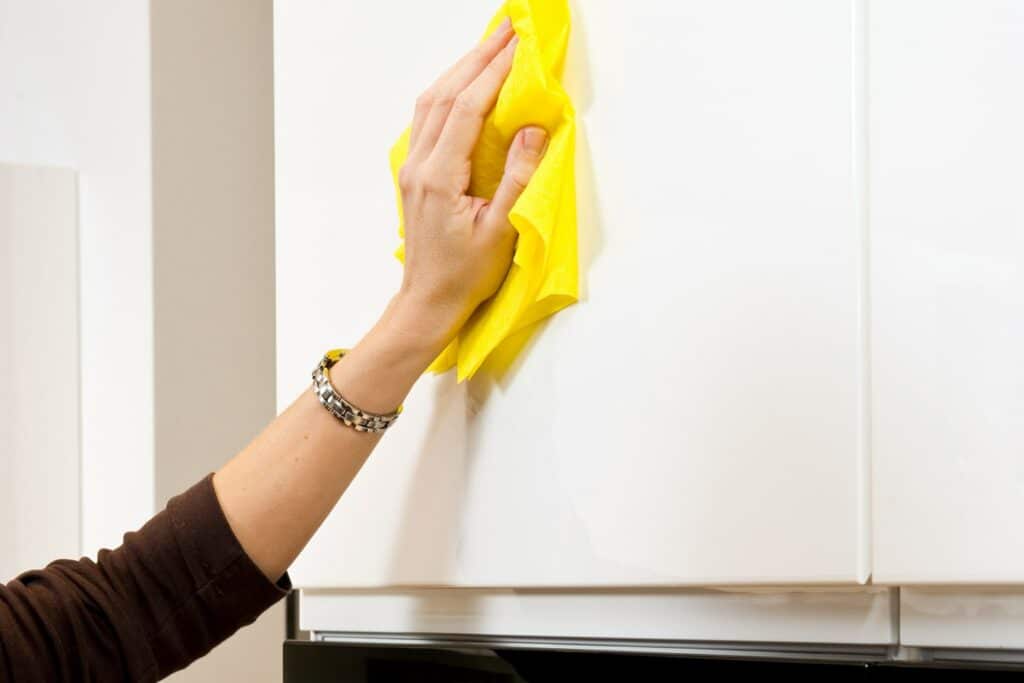
LACQUER AND LAMINATE
Lacquer and laminate fronts should also never be cleaned with a dry cloth. This includes surfaces made of real or UV lacquer, glass laminate or lacquer laminate but also our cement and metal fronts with original materials, as these are sealed with a layer of lacquer. In this case the cleaning agents of choice are special cleaning agents for kitchen fronts. Under no circumstances should you use glass cleaners!
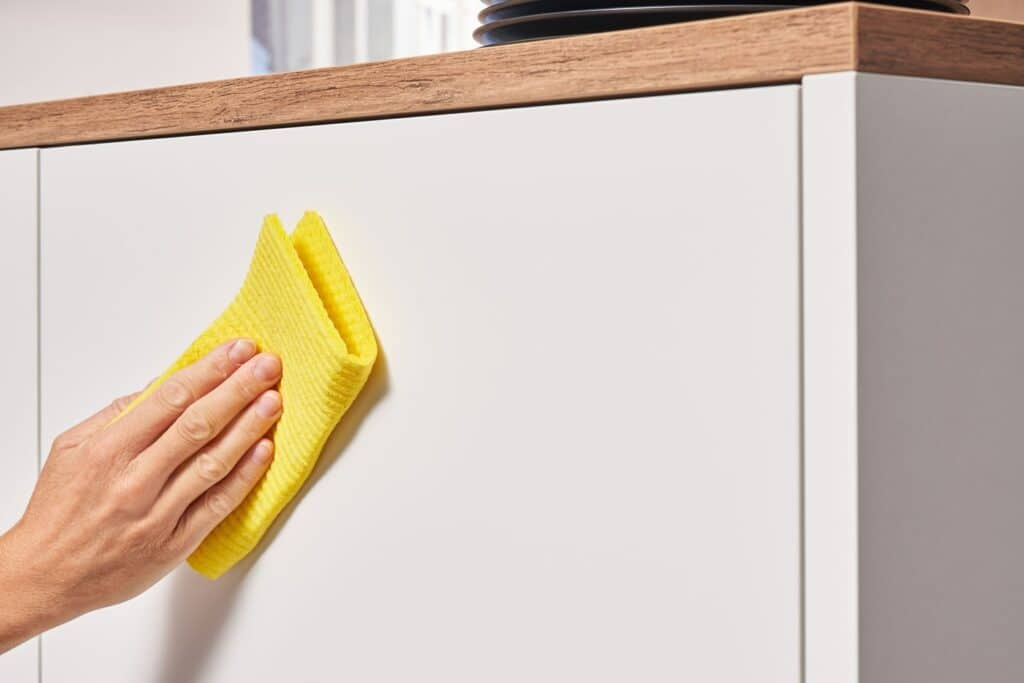
WOODEN FRONTS
While our wooden fronts are also sealedwith lacquer, they are more low-maintenance where cleaning agent is concerned.No matter whether your front is made of solid wood or veneer: A slightly dampcloth is enough. Always wipe in the grain direction, immediately remove anydirt so that it does not dry on and then wipe the fronts dry. This prevents moisture from entering edges or profiles.

GLASS FRONTS AND GLASS RECESSES
No matter whether your surface is glossy ormatt: Simply take a glass cleaner or neutral cleaner combined with a softsponge or (leather) rag. On glass with a satin finish, grease and oil may leavestains that create a shadow effect. If the glass cleaner is not effective, trya brand product for glass-ceramic cooktops that is not overly abrasive. Rubbinga moistened dirt eraser over the glass with slight pressure may also be effective.
WORKTOPS
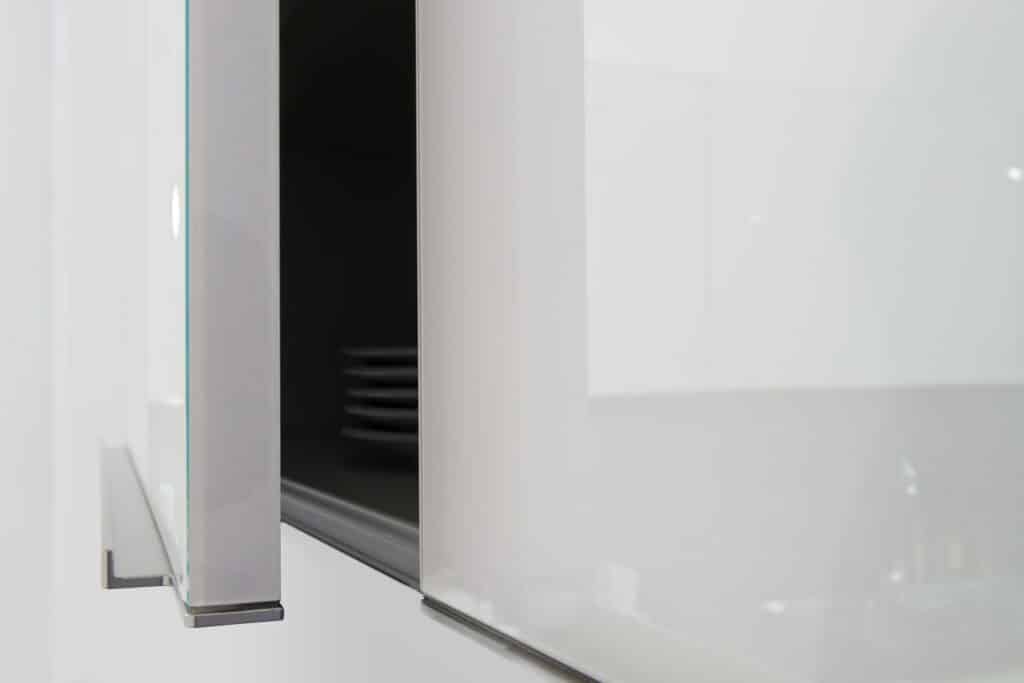
Our worktops have a highly resistantsurface made of laminate. Nevertheless, cooking will leave its mark in the longterm. For cleaning, use a microfibre cloth, water and dishwashing detergent.Persistent stains can be removed with a dirt eraser - or damp-cleaned withspecial kitchen cleaners - and slight pressure. However, when doing so youshould always clean a larger area in the same manner. Otherwise the cleanedsurface will stand out because the eraser effect reaches deep into the textured surface..
